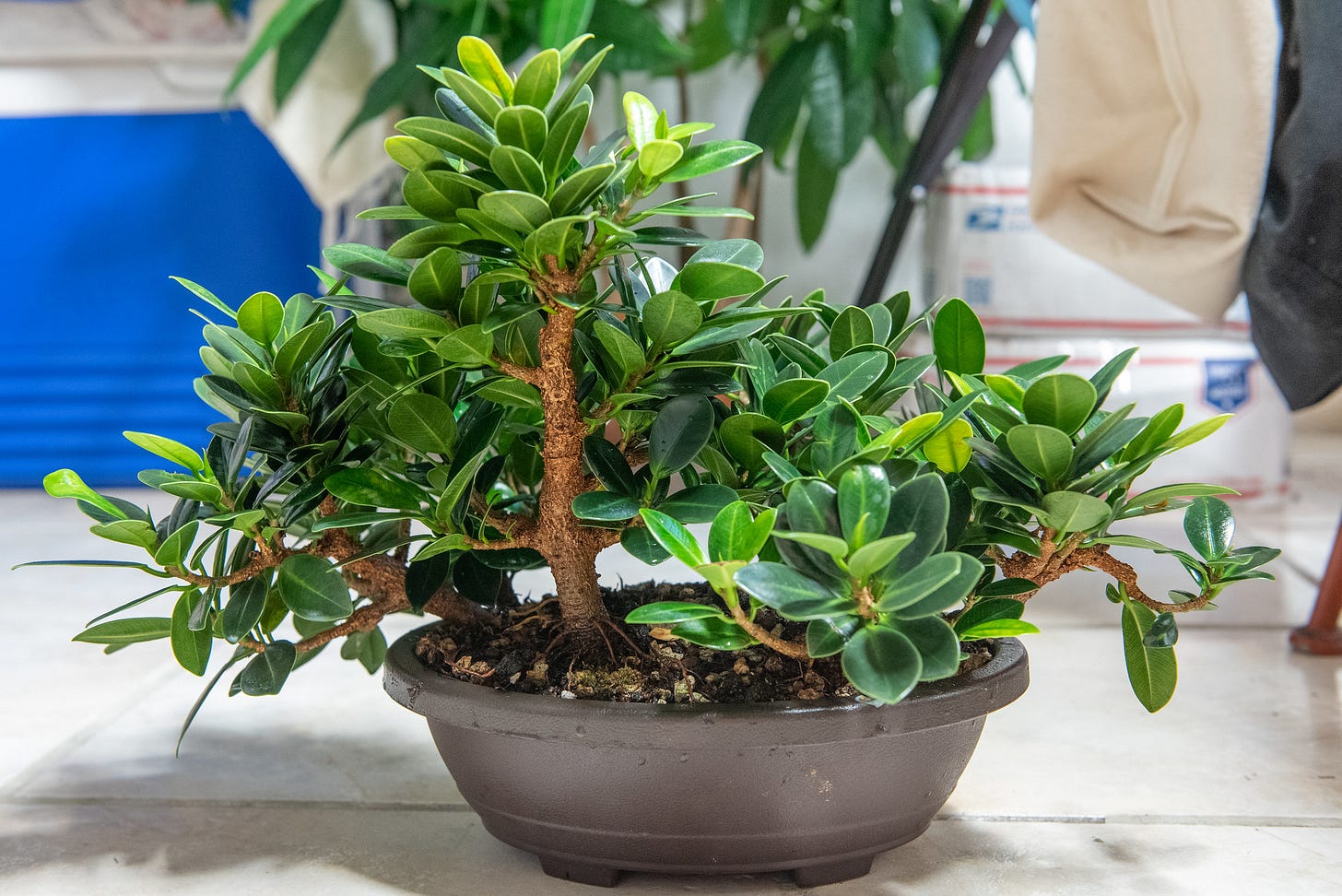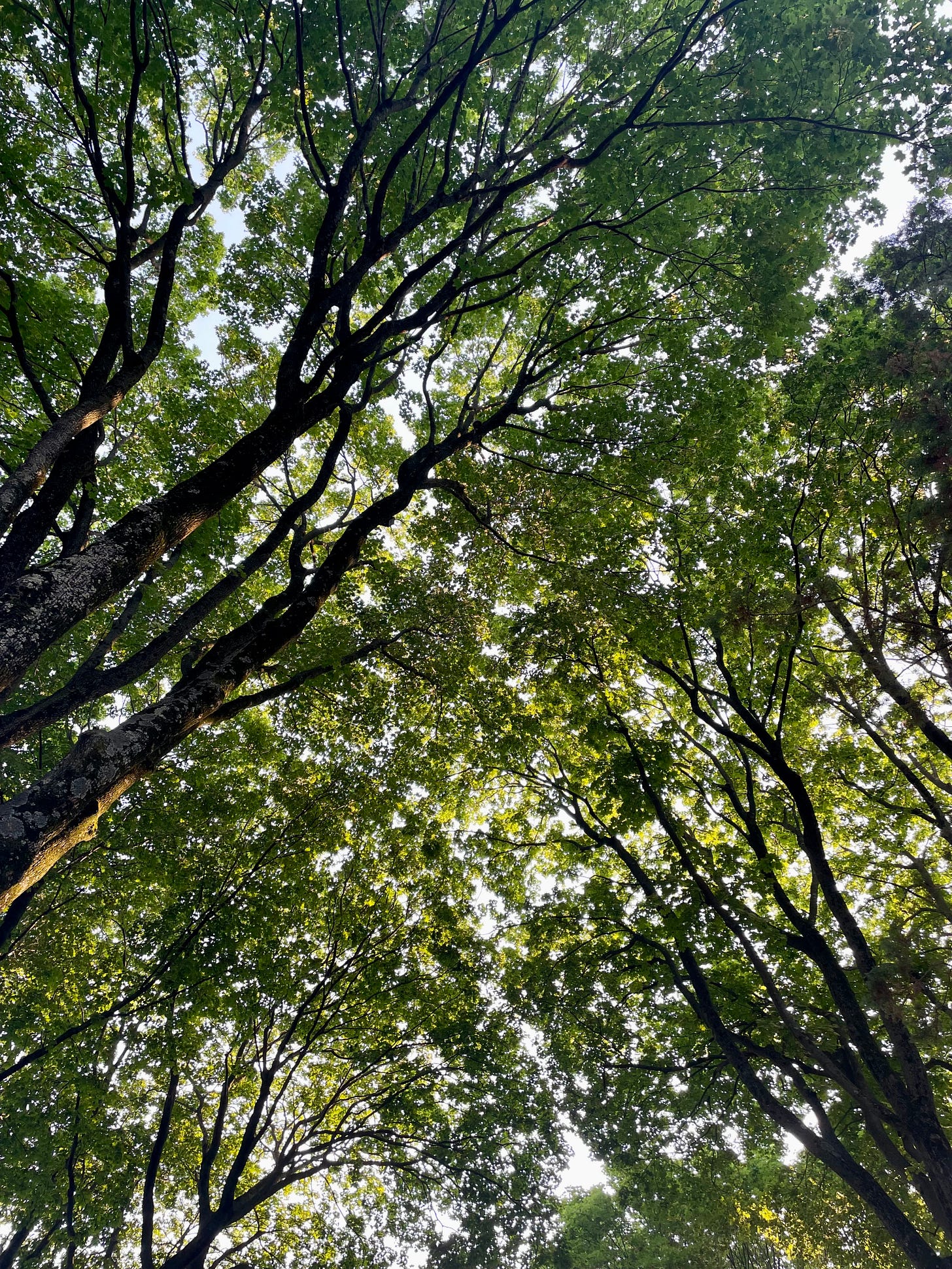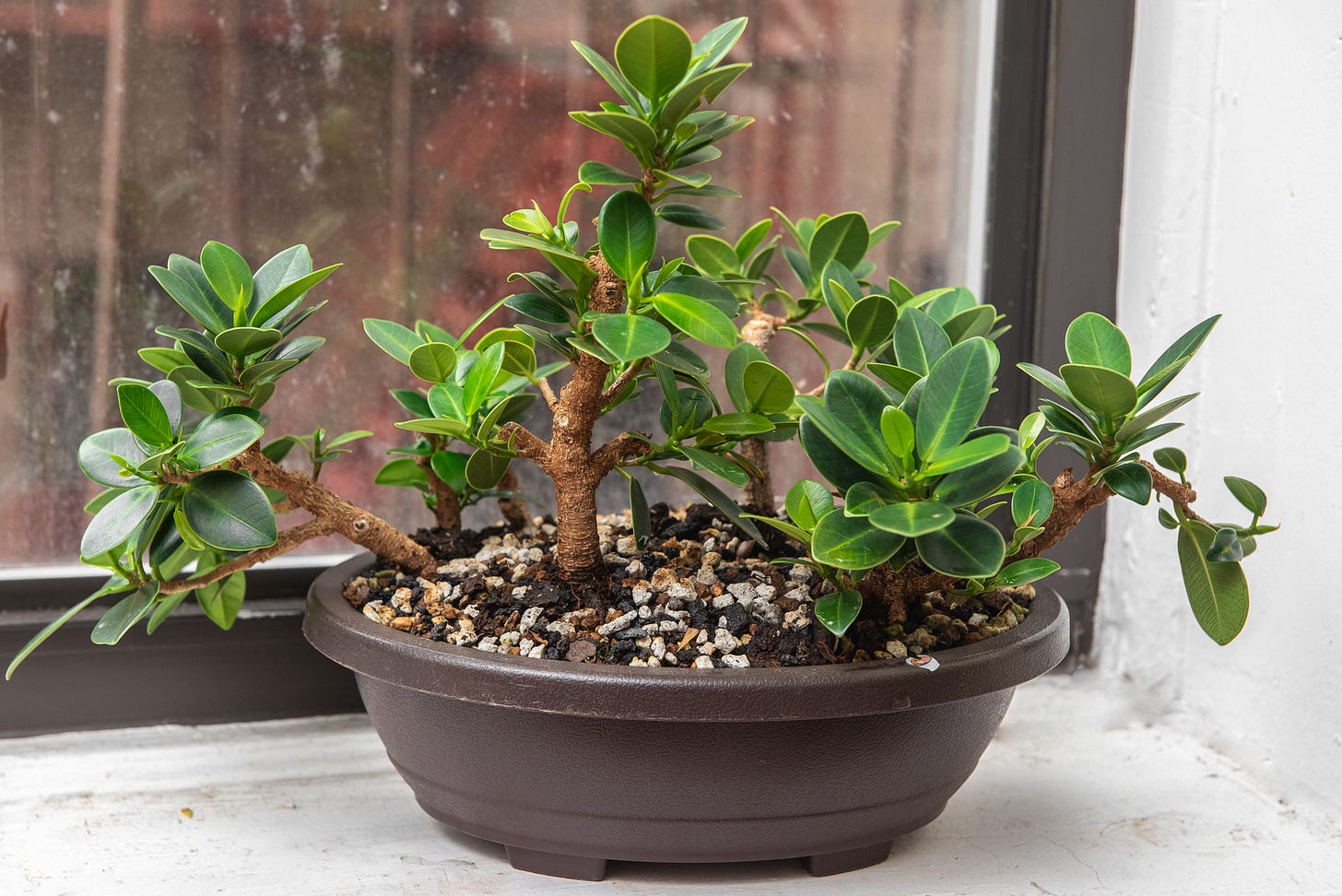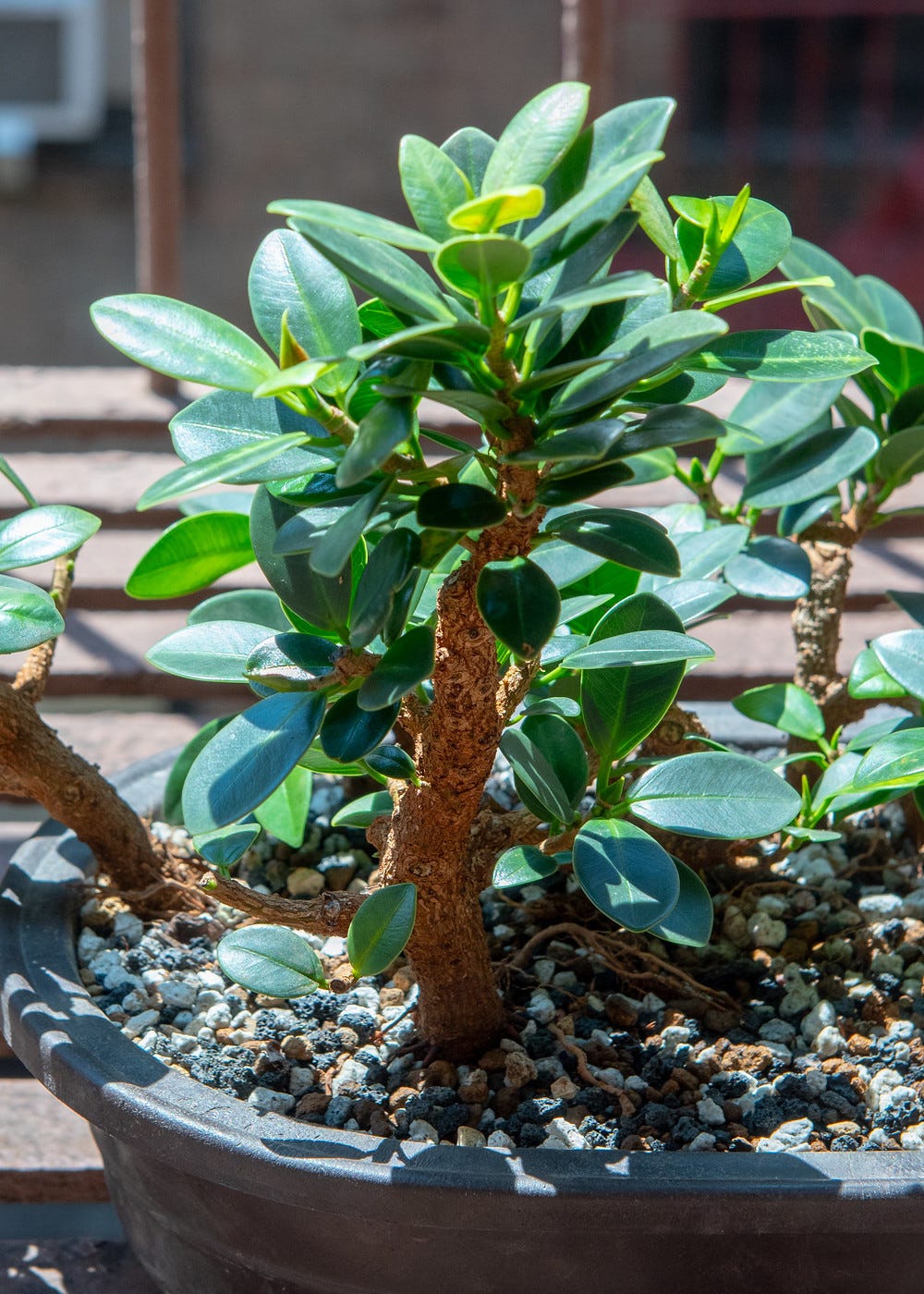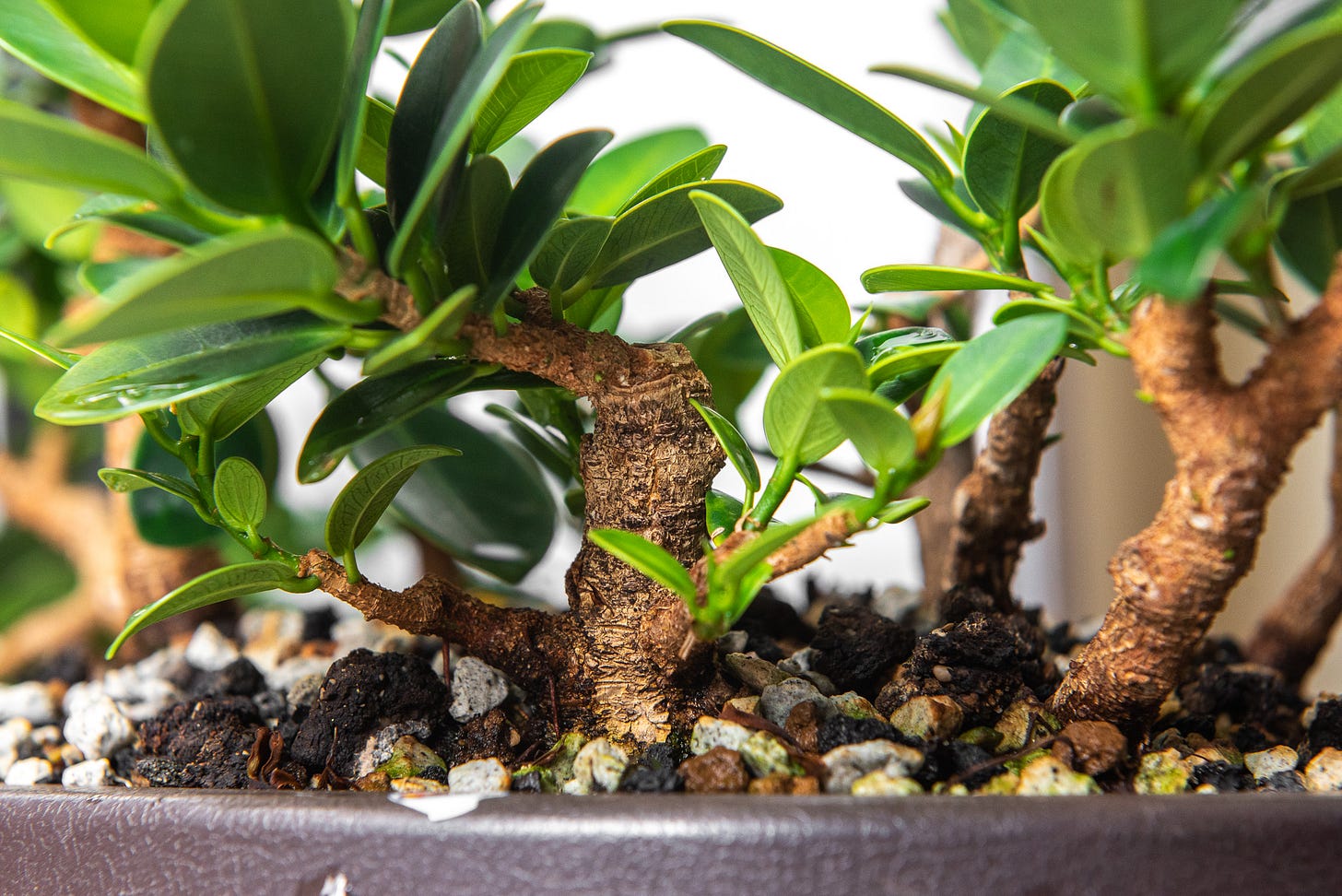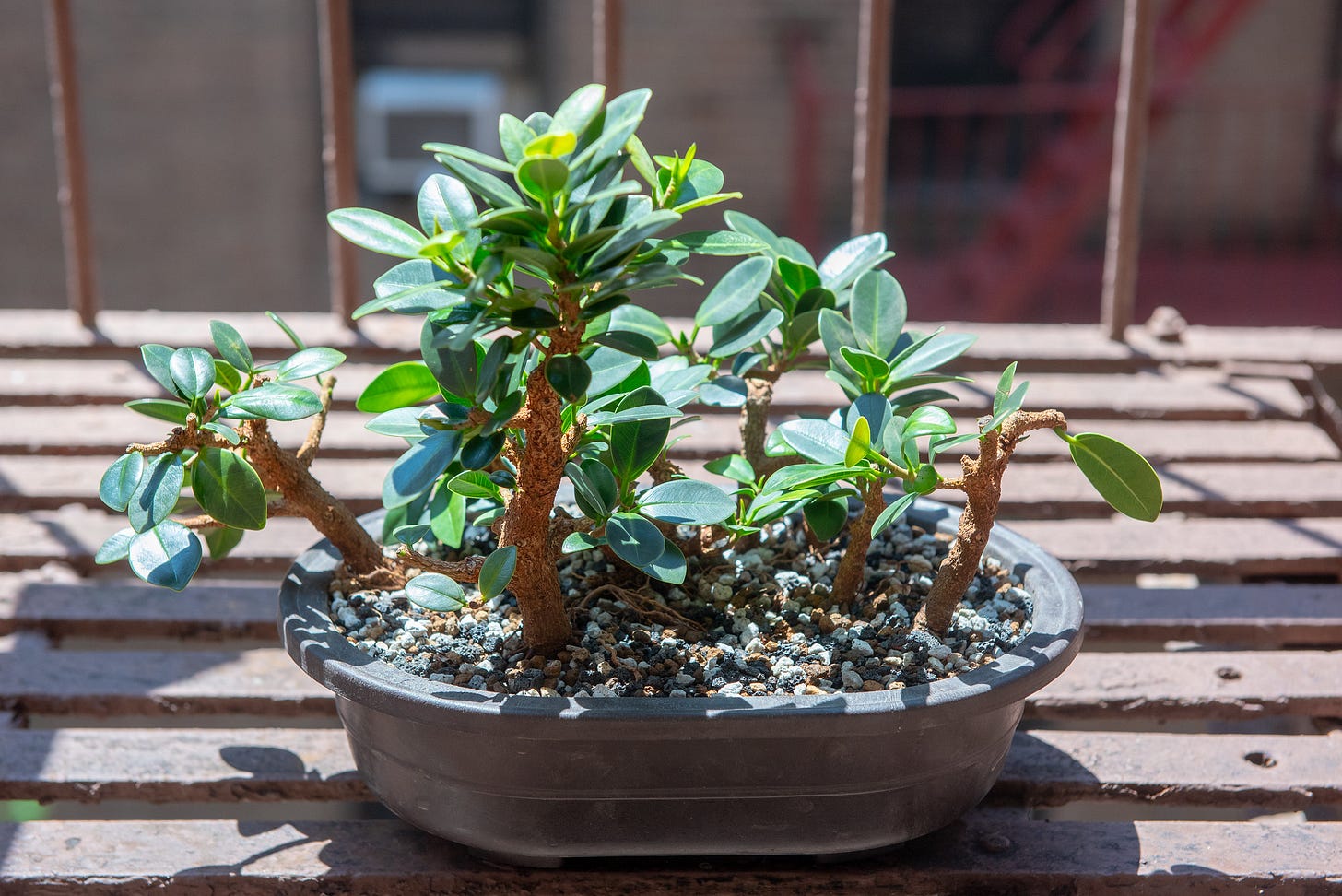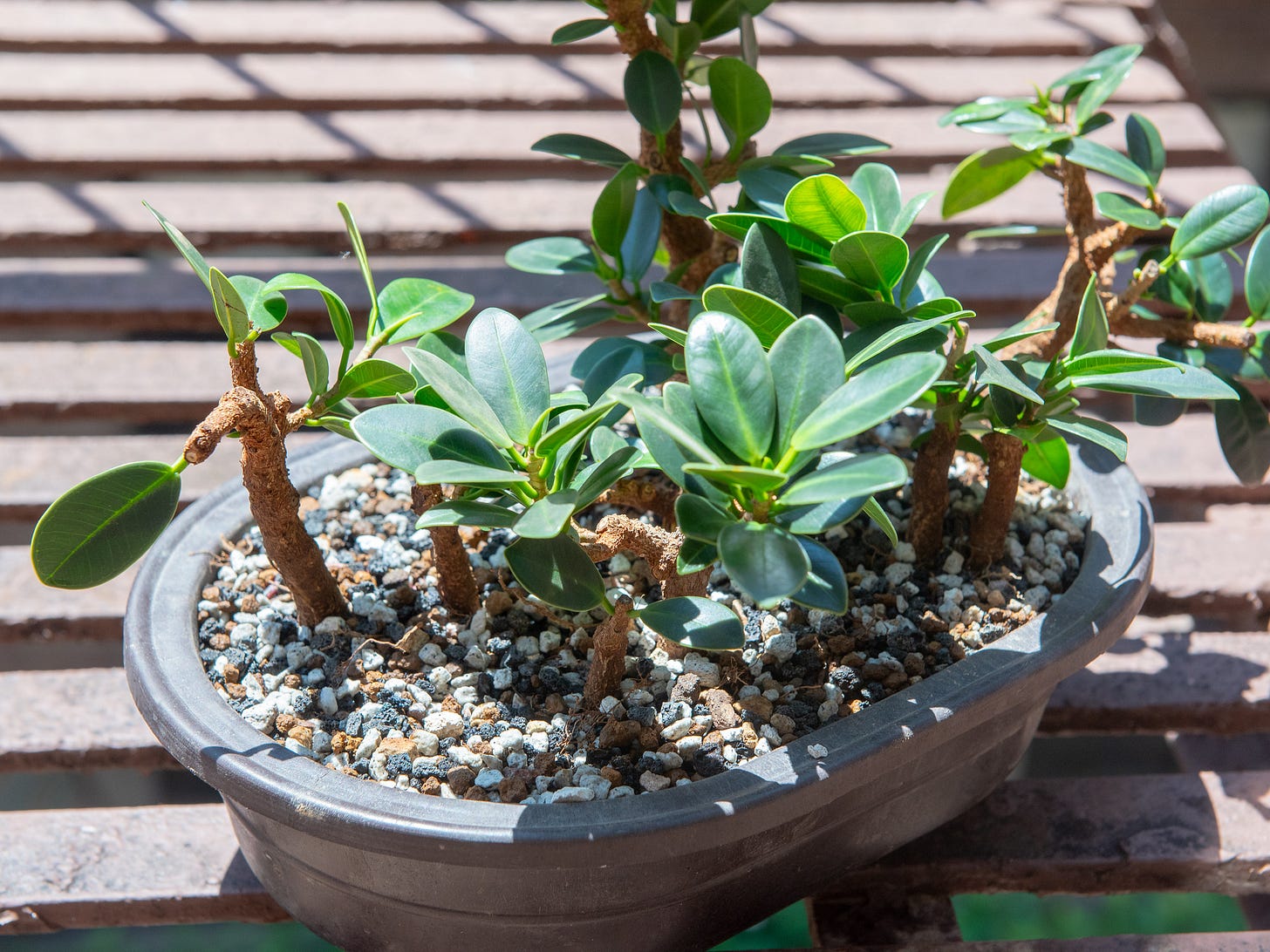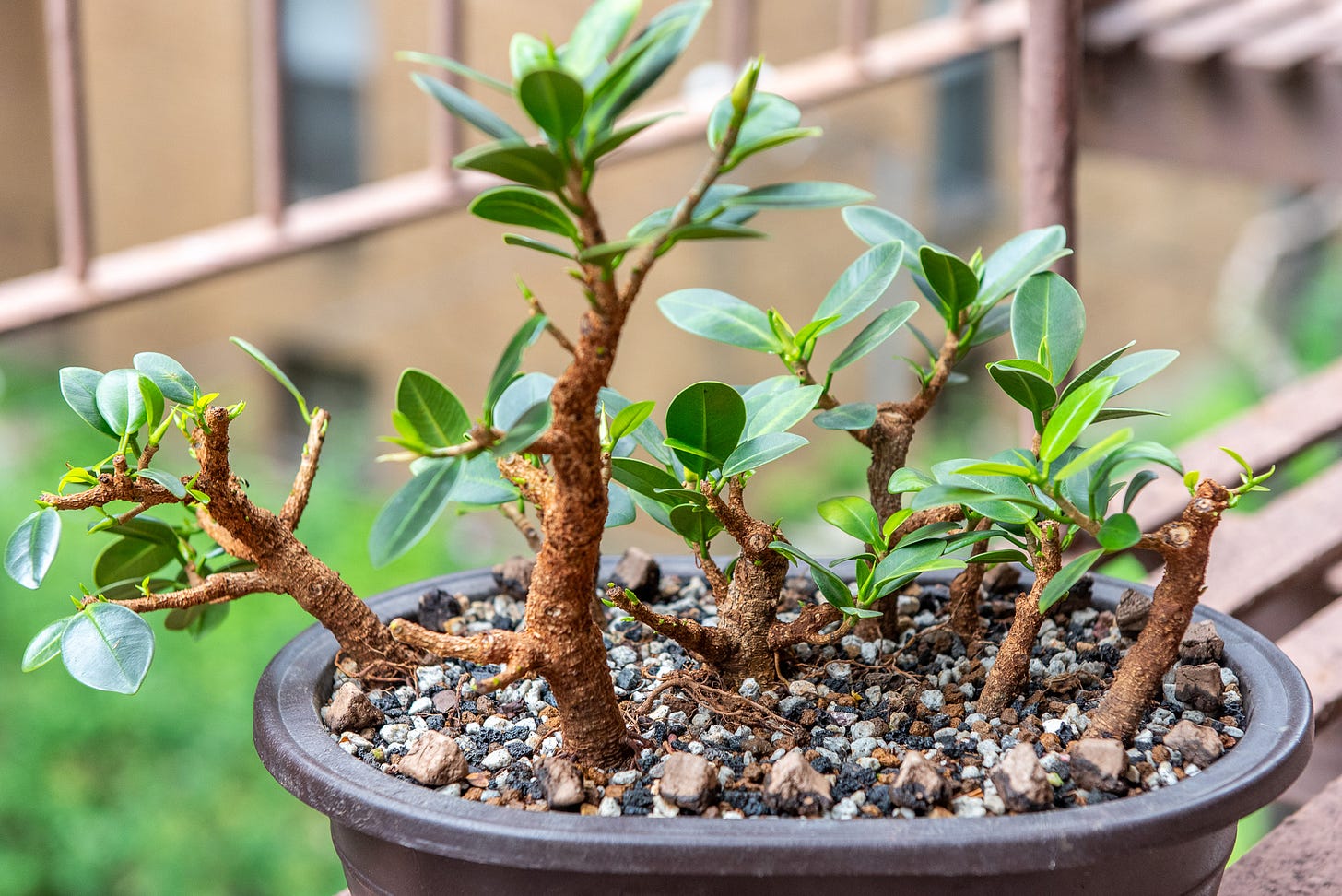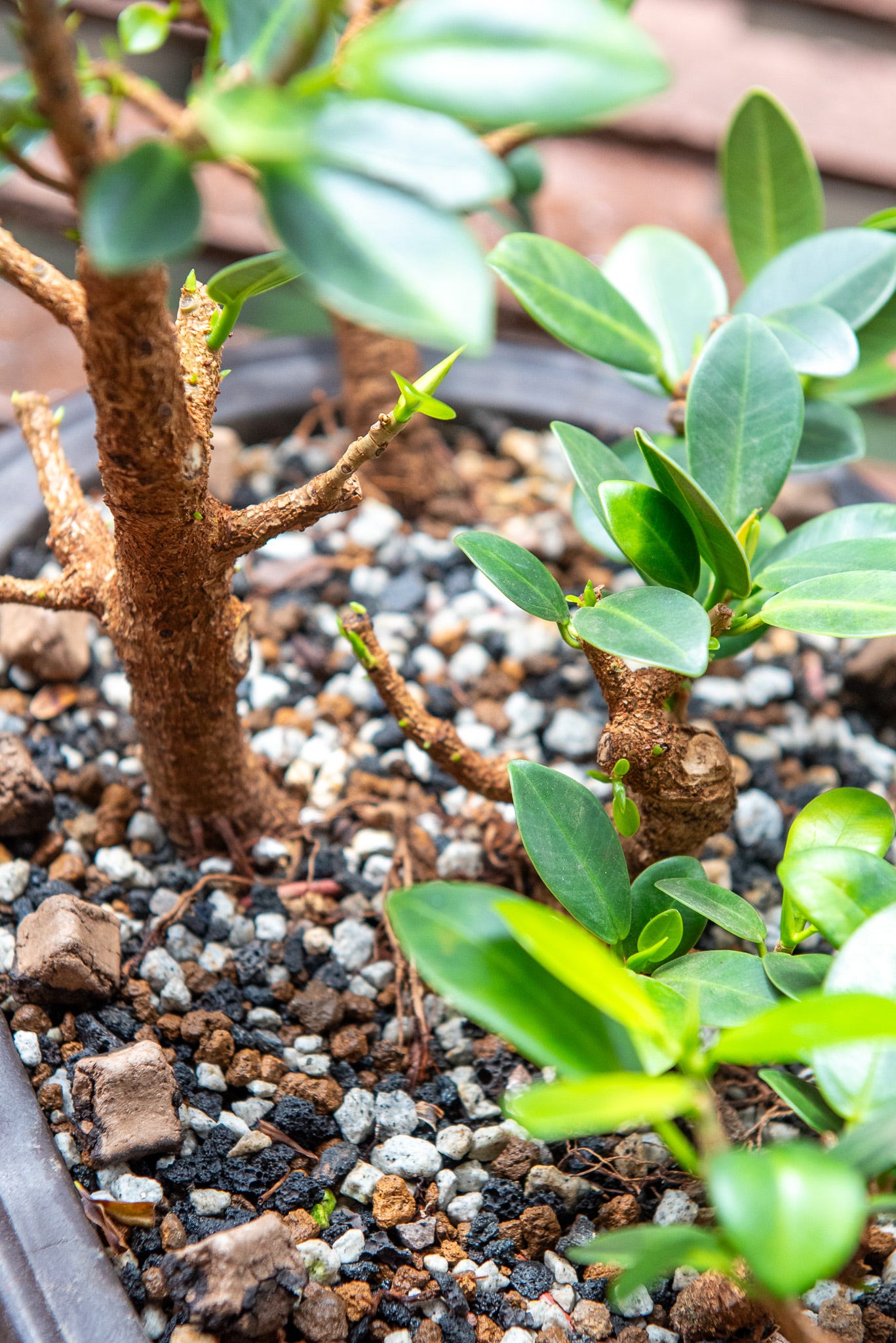The woods walk at night
Cultivating narrative in a bonsai forest.
The fig forest I planted earlier this year has become bushy with new growth, so much so that it’s difficult to inspect the soil beneath. With a mite infestation under control, and the arrival of a new pot better suited to the forest design, I decided it was time to dig up the trees and check on their progress.
Trees create food through photosynthesis during the day. At night, their cells divide and they grow. If we were patient enough, our relationship with time different enough, we could sit and watch them. Trees aren’t inanimate, they just move slowly.
In a forest, trees account for the limbs of their neighbors in determining where to direct their own growth. You may have seen the phenomenon called crown shyness: a tendency among trees to leave room for Jesus between their canopies and others’. Young trees growing in the shade of older ones will reach outwards toward the light. If you sped up the decades you could observe the influence of individual trees and watch the forest walk around them. A tree matures and displaces those near it. When it finally falls, light floods through the bare patch of canopy and spurs a flush of growth from the forest floor. Nearby trees claim the newly available territory and begin the cycle again.
As I pulled individual trees apart in my planting, cleaned their roots, and trimmed their foliage, I considered what feelings I wanted this forest to evoke. I was never wild about the original arrangement; it got all the trees in one pot but didn’t show much artistry. These rooted cuttings are still so young, there’s not much character to them.
I want this tree to be the anchor of the planting. It’s the tallest and the beefiest, and it has some trunk movement. The trunk appears to me as if it’s looking to its left, standing on its tiptoes to lean a few degrees closer. In the logic of my forest, what should it be growing from and what should it be growing toward?
The answer to the first question is this funny stump of deadwood with live branches growing out from the base. Its trunk is wide in proportion to the rest, so for now it looks like a tall, old tree that got chopped down.
I’ve positioned my anchor tree so its lower trunk appears to be growing away from the stump. By giving the stump space all around it, I want to replicate the hole in the forest canopy that appears when an elder tree falls. Like its real-world counterparts, the stump will shoot out new branches from its base, but I’ll keep them trimmed, as if they were shaded out by the younger—now taller—trees around them.
Some of the smaller trees developed a leaning habit, which I tried to emphasize as I rearranged them. The anchor tree is positioned up front and to the left. The stump lurks behind it, slightly off center. The younger trees on the right lean out and away from the stump.
I left some negative space on the far right of the pot to suggest a clearing at the edge of the forest. The idea is to point the way the trees will walk in the coming years.
Here’s the forest a week after replanting. Now that most of the old foliage has fallen off, it’s easier to see the outlines of the individual trees, even if they’re still scraggly with extra branches to help them recover. We’re still a ways off from “good,” but I feel optimistic about this rearrangement. The narrative is coming together. As the trees mature, so will the story they tell.
Tree reading
It’s the last day to add your voice to the public comment period held by the US Forest Service. Old growth forests are our most valuable forests; you can show your support by encouraging their protection. [Climate Forests]
In a move against striking SAG-AFTRA union members, Universal Studios seems to have pruned city-owned trees without a permit to deny shade to picketers. The LA Controller’s office is investigating. [Twitter]

